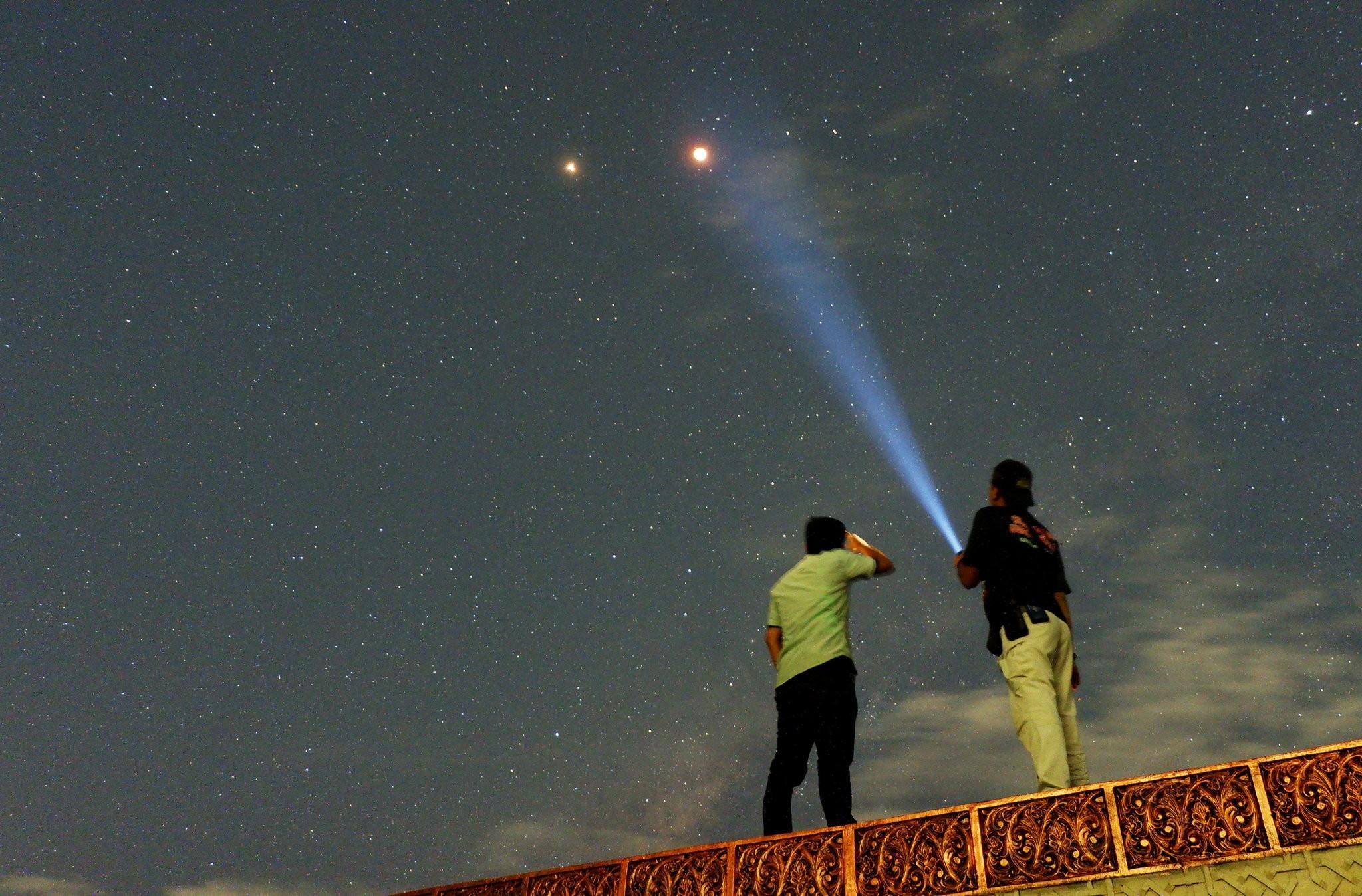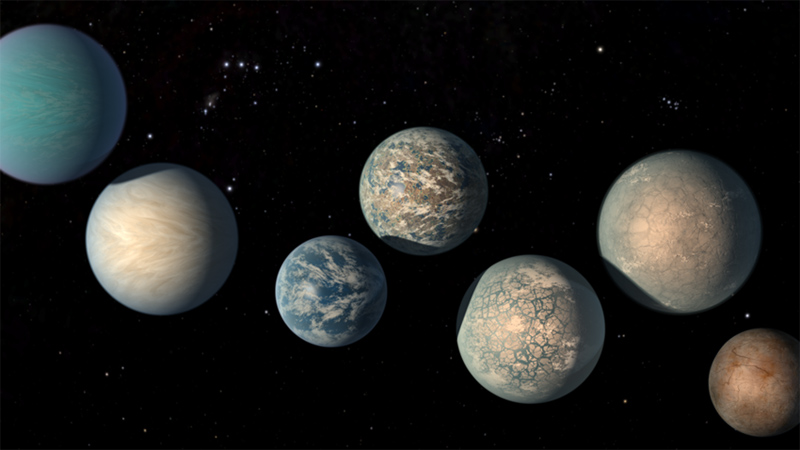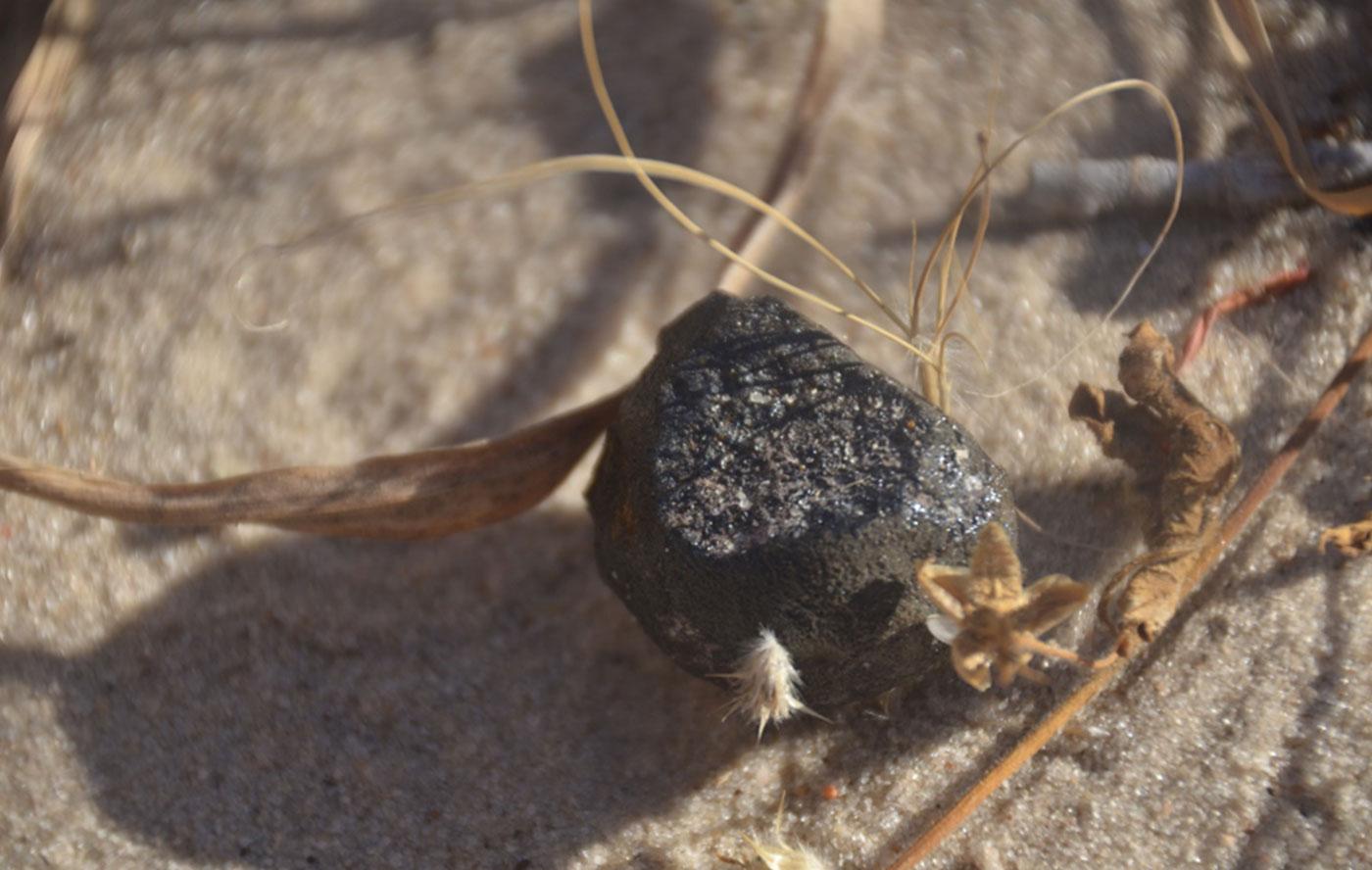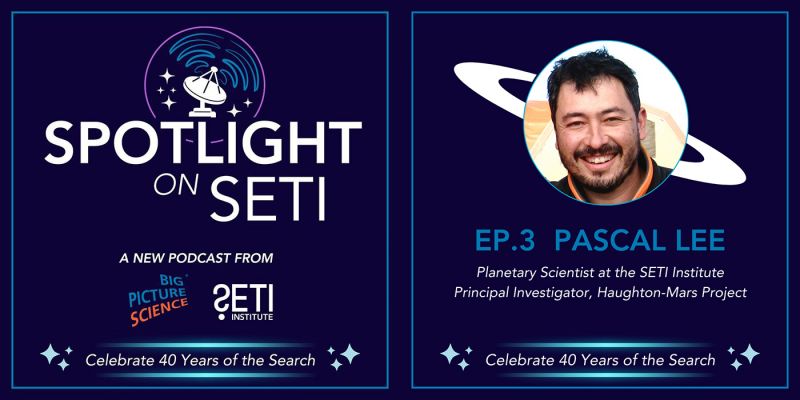
Mars has been a bit of a media darling lately. Recently, it has been closer to the Earth than it’s been since 2003. Because the Earth and Mars have elliptical (egg-shaped) orbits around the sun, orbit at different speeds and are slightly tilted in relation to each other, the distance between the red planet and Earth varies throughout the years. “Close” is still a relative term, however, as the SETI Institute’s Senior Astronomer, Seth Shostak, wrote in a piece for SF Gate:
OK, but how close? About 36 million miles, or about 12 million miles farther than Venus at its closest. If you were to drive your Honda to Mars at freeway speeds, you'd arrive after only 63 years. Be sure to occasionally change the oil.
While illuminating the night sky with unusual brightness, Mars is also drawing attention due to recent news of findings that suggest an underground lake of liquid water beneath its southern pole. Astrobiologists, already curious about the possibility of finding extraterrestrial life – at least, microbial life – now have a promising target for future missions. Since microbial life has been found on Earth in extreme environments, it’s theoretically possible for similar kinds of life to exist elsewhere, provided the right conditions are met. On Earth, one of those conditions is water. The New York Times pointed out that we still don’t know how life started on Earth, or how common it is in the Universe, and quoted Jill Tarter, Chair Emeritus for SETI Research and co-founder of the SETI Institute:
As Jill Tarter of the SETI Institute in Mountain View, Calif., who has spent her whole life looking for ET, likes to say, we only know of one example of life in the universe. That is the mind-bogglingly complex web of DNA-based organisms on Earth.
“We are looking for No. 2,” she said.
While the possibility of liquid water on Mars is thrilling, finding signs of life will still be a challenge. According to a study recently published in the journal Astrobiology and announced in a NASA press release, Martian soil is about 1000 times dryer than the driest expanses on Earth. The study was led by NASA Ames Research Center and included researchers from the Carl Sagan Center at the SETI Institute, including Kimberly Warren-Rhodes. By studying microbes in the Atacama Desert in Chile, one of the harshest and driest environments on Earth, scientists hope to discover the limits of life’s ability to survive. The Director of the Carl Sagan Center for the Study of Life in the Universe, Nathalie Cabrol, has studied the region extensively (you can view her TED Talk on the subject here). The results of the recent study show that in the driest regions, life can only survive in a dormant state (technically surviving, but not reproducing). While the results are not exactly encouraging for those hoping life exists today on the red planet, the study did reveal means of detecting long-dead life, some from as long ago as 10,000 years. Even evidence of past life on Mars would have a groundbreaking impact on our understanding of life in the universe.
- The New York Times: Mars Is Frigid, Rusty and Haunted. We Can’t Stop Looking at It.
- SF Gate: Mars will get 'unusually close' to Earth starting July 27
- NASA: Is Mars’ Soil Too Dry to Sustain Life?
- TED.com: How Mars might hold the secret to the origin of life
- SETI.org: Want to Go to Mars?
- SETI.org: Mars Gallery
 Ranking Contact: New Rio Scale Rates Claims of E.T. Detection
Ranking Contact: New Rio Scale Rates Claims of E.T. DetectionThe Rio Scale is a tool to help determine if a claim of extraterrestrial contact is noteworthy. Developed in 2001, it was recently upgraded with a more detailed, but still easy to use, system for ranking claims. Jill Tarter, Chair Emeritus for SETI Research at the SETI Institute, co-authored a new study published in the International Journal of Astrobiology on the latest update to the Rio Scale. Space.com picked up the story, noting Tarter’s statement on the upgraded Rio Scale:
“The SETI community is attempting to create a scale that can accompany reports of any claims of the detection of extraterrestrial intelligence and be refined over time as more data become available,” Tarter said. “This scale should convey both the significance and credibility of the claimed detection.”
The Guardian noted that Andrew Siemion, the Bernard M. Oliver Chair of SETI Research and a Science Advisor at the SETI Institute, hopes the revised Rio Scale will encourage researchers and the public to thoroughly evaluate discoveries:
Andrew Siemion, another co-author, and director at the Seti Research Center at the University of California, Berkeley, added: “We absolutely encourage wide assessment of the Rio scale for any purported discovery, particularly by independent scientists. It is critical in any scientific process to have independent review of methods and interpretation.”
The researchers have set up an online calculator that can be used by the public to score claims of extraterrestrial contact.
- Space.com: SETI Researchers Want to End the Alien-Detection Hype
- The Guardian: First contact or false alarm? New Richter-like scale for alien signals
- Cambridge University Press: Rio 2.0: revising the Rio scale for SETI detections
 Weather Satellites Track Flash of Bolides
Weather Satellites Track Flash of BolidesMeteorite hunters have the odds against them most of the time when they try to locate tiny fragments of rock that fall through our skies. Often, they depend on witnesses who spied the fiery entry to help narrow down the search area; rarely, researchers are able to observe the asteroid in space before it enters the atmosphere. That’s what happened recently in Botswana, where SETI Institute senior research scientist Peter Jenniskens was able to calculate the landing area and assist a team of experts in locating a fragment of asteroid 2018 LA, marking only the second time in history that a small asteroid observed approaching from space was recovered after impact. Now, researchers are developing a new tool to study asteroid impacts. Findings recently published in the journal Meteoritics and Planetary Science show that the Geostationary Lightning Mapper (GLM), one of several detectors carried on a pair of weather satellites and designed to map lightning flashes, is also able to pick up the flash of a flaring meteor in Earth’s atmosphere. Jenniskens, who was the lead author of the study, explained the findings to Phys.org:
"GLM detects these meteors when they become brighter than the full Moon," says lead author and meteor astronomer Peter Jenniskens of the SETI Institute and NASA's Ames Research Center in California's Silicon Valley. "Meteors that bright are called 'bolides' and they are caused mainly by the impact of small asteroids."
The study shows that 10 meteors have been identified with existing data, which also illuminates differences in the way different impacts may provide insight into the makeup of asteroids.
- SETI.org: Fragment of Impacting Asteroid Recovered in Botswana
- Phys.org: Planetary defense has new tool in weather satellite lightning detector
- Astronomy Magazine: From discovery to data: How astronomers track near-Earth asteroids
- Wiley Online Library: Detection of meteoroid impacts by the Geostationary Lightning Mapper on the GOES‐16 satellite
In last week’s episode, from spider silk to space suits, discover the materials that matter in an encore of It’s In Material. On our previous week’s episode, learn why DNA, believed by many to be the best form of identification, doesn’t tell the whole story in Identity Crisis.
Last week on Facebook Live, we met the Frontier Development Lab (FDL) Space Resources team and found out what they’re working on, with FDL Producer Sara Jennings. On our previous episode of Facebook Live, we met the Exoplanet and Astrobiology research teams in FDL as they discussed their projects with SETI Institute Trustee and FDL Exploration and Ideation Director Jonathan Knowles. Videos of all past Facebook Live events can be found on our Facebook page: https://www.facebook.com/SETIInstitute/
- SETI Talks: August 14, Menlo Park, CA Inspiring the Next Generation of Explorers – Education Programs at the SETI Institute
- WorldCon 76: August 16-20, San Jose, CA SETI Institute scientist Michael Busch will be participating, as well as a member of the SETI Institute Board of Trustees, Andrew Fraknoi
- International Astronomical Union: August 20-31, Vienna, Austria Franck Marchis, SETI Institute Senior Scientist will speak about adaptive optics and the Unistellar eVscope
- Our Journey Towards Mars: September 10, San Francisco, CA: SETI Institute scientist JR Skok will speak at the California Academy of Sciences
- Astronomical Society of the Pacific Annual Meeting: September 10-13, Rohnert Park, CA Molly Bentley, co-host of Big Picture Science, will participate in a panel discussion
- Astronomy Night: Searching for Aliens, Finding Ourselves: September 15, Mill Valley, CA Jill Tarter is the featured speaker
- Institute of Geophysics and Planetary Physics: September 28, Santa Cruz, CA SETI Institute scientist JR Skok will give a talk about the search for life in the Martian Hot Springs
- The World Above the Tetons Science Speaker Series: September 29, Teton Village, WY Jill Tarter will present Communicating Beyond Earth
- International Aeronautical Conference: October 1-5, Bremen, Germany John Rummel, Senior Scientist at the SETI Institute will be chairing a session
- Maria Mitchell Women in Science Symposium: October 5-6, Wellesley, MA Jill Tarter will be a keynote speaker





